How Can You Supercharge Higher Education Email Marketing?
1. Reasons to use email marketing for universities
2. Where to start with an email campaign for colleges and universities
3. Ideas for university email marketing
4. Key elements of each email
5. Key requirements for higher education email marketing campaigns
6. Key metrics to measure college email marketing
7. Mistakes you should avoid
8. Examples of higher education email marketing
Useful tools:
1. Newoldstamp - Email signature marketing
2. Mailchimp - Email builder and sender
3. Reply.io - Personal email outreach, calls, and tasks
4. Rebrandly - Your branded short linker
5. Canva - Online tool for making designs
All higher educational institutions need to attract applicants in order to survive. For such purposes, they often choose social media marketing. And this is indeed quite reasonable because most students are people under the age of thirty, and most of them are active users of social networks. However, universities and colleges shouldn't overlook email marketing because Millennials (born 1981-1996) and Generation Z (born 1997-present) are checking emails no less than social media feeds.
Here are some statistics from Adestra, a provider of email marketing tools:
- 68% of Generation Zs say they prefer to receive news from brands via email.
- 73% of Millennials prefer to communicate with brands via email.
Reasons to use email marketing for universities
Universities and colleges should choose email marketing because it is cost-effective, convenient, and usable for different purposes.
-
Cheap marketing channel
Email marketing for universities is one of the cheapest methods to communicate with your target audience on the Internet. It also offers one of the best returns on the investment of your time.
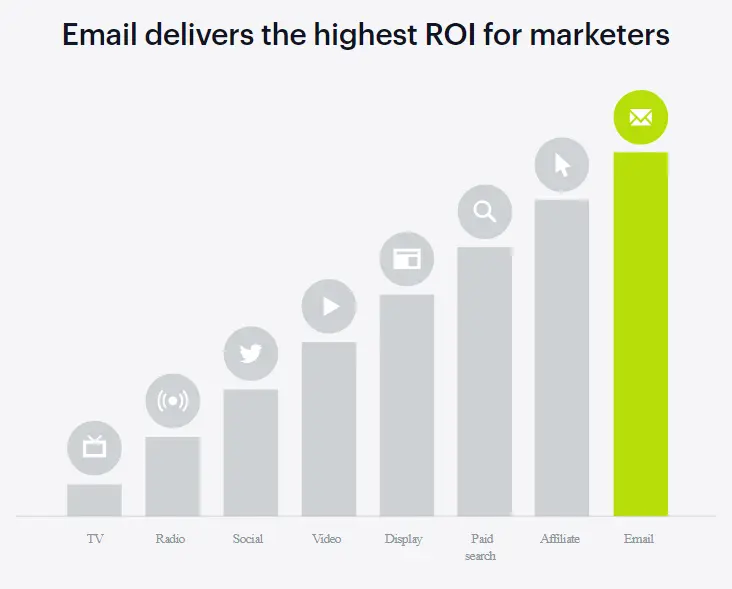
image source: Campaign Monitor
-
Convenient communication channel
Email marketing is the thing universities can do because it's easy. It's an effective way to keep applicants/students/their parents informed no matter where they are.
-
Can be easily used for different purposes
Higher ed email marketing campaigns can help complete different tasks: increase the number of students, improve the quality of their education, attract international students, share all the important news, and much more.
Where to start with an email campaign for colleges and universities
We have put together six essential steps to take for your email campaign to be successful.
#1 Set the goals for your email campaigns
Effective higher education marketing campaigns always start with defining goals. What do the goals for universities and colleges look like? For example, higher education institutions may want to:
- Increase institute admission rates;
- Engage with prospective students;
- Improve communication with current students;
- Keep the faculty staff informed;
- Boost awareness of the institution.
#2 Create your marketing personas before sending emails
You wouldn’t speak to an enrollee the same way you would speak to a new teacher. That is why you need to develop buyer personas.
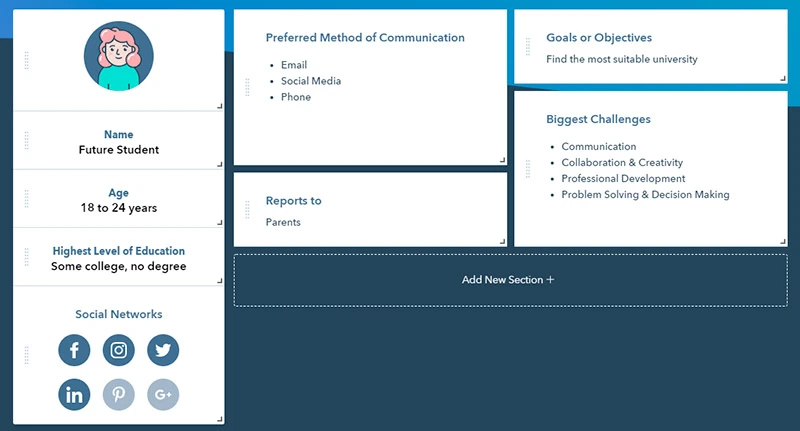
image source: HubSpot
Also, if you want to attract the best students, you need to learn who they are, what they do, and what they most likely respond to. Here are the five essential higher education buyer personas we have identified.
- Enrollees. Universities can attract enrollees using email;
- Alumni. By keeping in touch with people who have graduated from your institution, you can get valuable information such as your institution's pros and cons;
- Current students. Share content with your current students to improve their educational experience or simply to keep them informed;
- Parents. Consider communicating with parents of potential and current students;
- Teaching staff. You can further break this group down by administrative personnel or teachers within specific departments.
#3 Create recruitment funnel for student enrollments
The ultimate goal of educational marketing campaigns tailored at prospective students is to get new students. The process of reaching that goal consists of several steps. And if colleges and universities break this process down into these steps, it will become easier to send the right content at the right time.
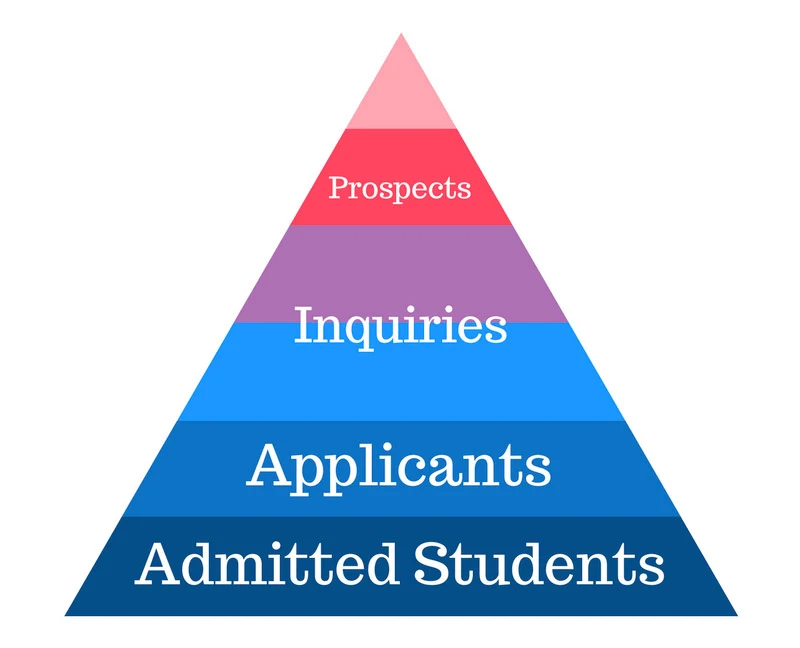
image source: Delivra
Let's say, Mark has contacted the college to learn more about an academic program. At this point, the college needs to lure Mark to set up an interview or complete his application. So, the college should send content explaining how the prospective student can do so. Once the student set up the interview, the college should send him emails to help him prepare. And once he has applied, it is appropriate to provide him with updates about his application. When the application is accepted, that doesn't mean that the college's work is done. During the time before the student starts the course, the college can offer additional content tailored towards freshmen to build a sense of anticipation and excitement.
#4 Create segmented email lists
The problem with many higher education marketing campaigns is that they treat all prospective students the same. However, there is no doubt that their audience prefers to receive personalized content and targeted messages that show them that the sender cares about what matters to the recipient.
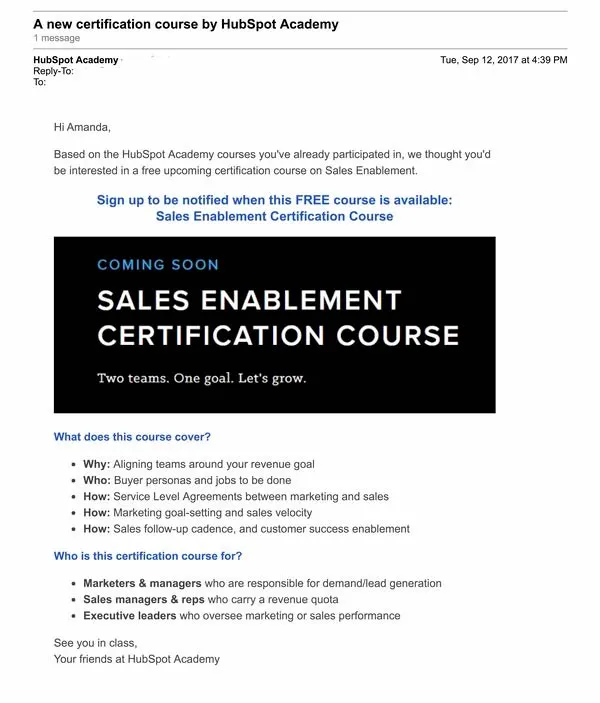
image source: HubSpot
Educational institutions can segment email lists in a variety of ways. For instance, an art student could be sent emails from successful artists who graduated from the same college. Parents of enrollees could be sent brochures with information about the application process and options for financial aid. It is also possible to segment the audience by the stage in the enrollment process, interests, location, and so on.
Read our blog post “How to Properly Segment Your Email List to Get the Right Response.”
#5 Create automated email sequences for nurturing
Segmenting email lists also allows colleges and universities to automate their repetitive marketing tasks, such as scheduling welcome emails or series of emails to prospective students and their parents. Higher ed marketers can also benefit from automation if they need to remind students of deadlines, offer them discounts for some local events, or send out surveys to find out how they can improve the quality of life on campus.
#6 Choose the best email service provider
Modern email service providers offer the features that educational institutions need if they want to be successful in email marketing. Those include subscription forms, triggering options, delayed scheduling, marketing analytics, and many others. Take a look at the list of some of the best email marketing service providers and see if they have all the features and price point that you need.
Ideas for university email marketing
To make email marketing work in their favor, universities and colleges need to think of emails that they should be sending to their subscriber list. They may consider sending the following types of emails:
-
Helpful resources
This type of email typically contains a list of links to some valuable content that recipients can refer to over and over again if necessary. For instance, if someone attends a webinar organized by a college, it is appropriate to follow up with an email full of helpful links.
-
Newsletters
Send out only good newsletters. Boring and too salesy content makes your subscribers lose interest. Ideally, a good newsletter should be organized around a specific topic (e.g., application process assistance) or a group (e.g., prospective students or parents). Before sending this type of emails, make sure you found a balance between “value-based” and “promotional” emails. It is advisable to keep the content 90% educational and 10% promotional.
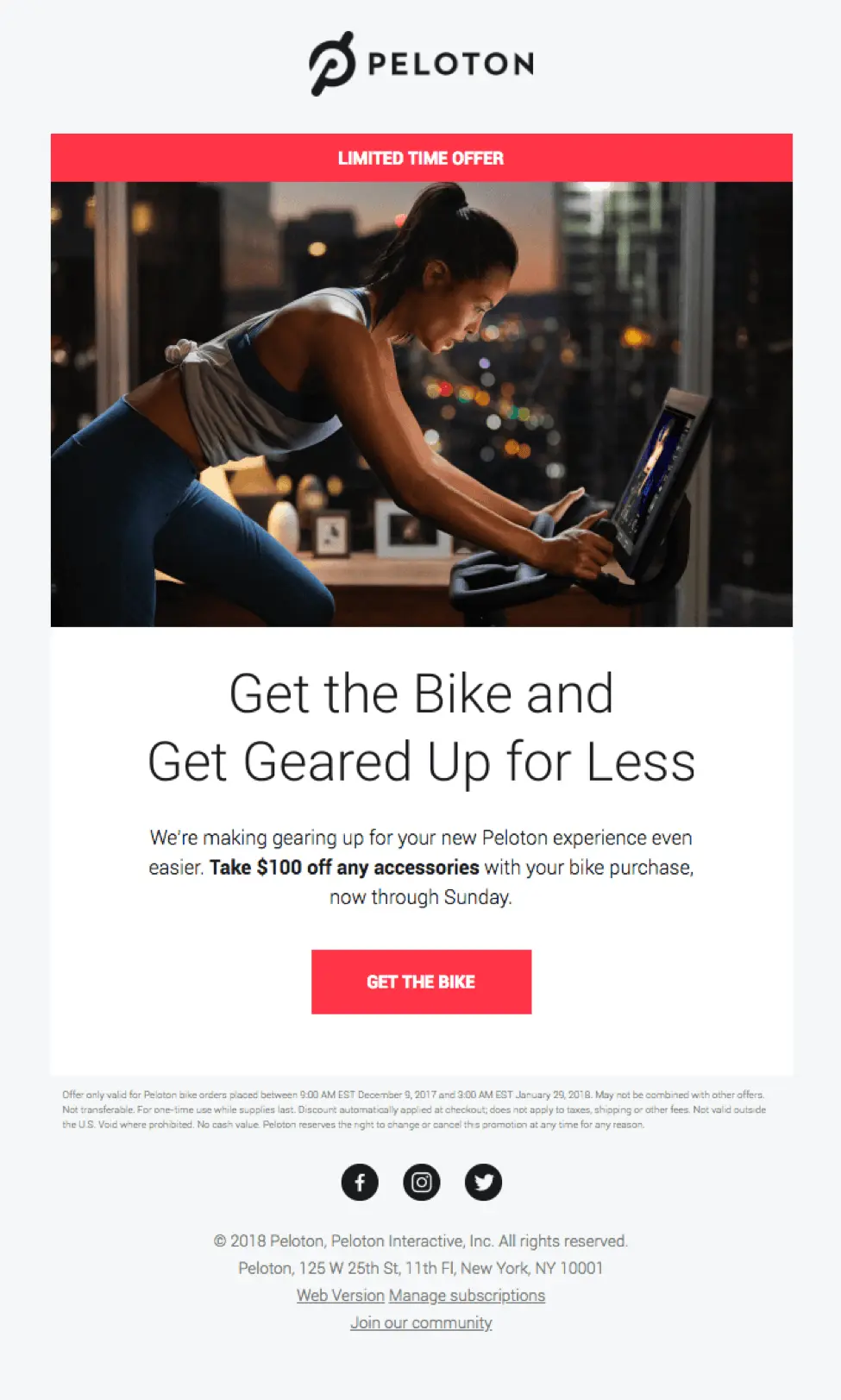
source: Oberlo
-
Important dates
Remind your audience about important upcoming dates. Be sure to organize this type of email in accordance with the stage of the recruitment funnel. A person six months away from their application date should get a very different “important dates” message than a person two years away.
-
Invitations to networking events
Potential and current students can benefit greatly from networking activities because such events are an excellent opportunity to meet new people and to practice some skills.
-
Information about courses
Educational institutions often share the content and descriptions of their programs and courses. One of the greatest things about this type of emails is that they already have most of the content created already.
-
Invitation to campus tour
Invite prospective students and their parents to make an on-campus visit.
Key elements of each email
To make the most of educational marketing campaigns, pay attention to these elements that colleges and universities should use in their emails.
-
Subject line
According to statistics, 69% of recipients send an email to the spam folder if the subject line doesn’t grab their attention. So, if you don't want students to mark your emails as “spam” or “junk,” make sure your subject lines are attractive, personal, and relevant. Check out our subject line guide and see how simple it is to get a recipient to click through on your email.
-
Follow your brand guidelines
When planning out your email marketing strategies, try to develop consistent branding used across all emails. Think of the tone of your emails, logo, colors, fonts, and layouts. All these elements will make your institution look much more attractive to your audience.
-
Add a call to action
The goal of most higher ed marketing campaigns is to drive action. Try to make this action as clear to the recipient as possible. Examples include an offer to schedule a visit/interview, find out more about your institution, donate, complete an application, and so on.
-
Email signature
A professional email signature makes your emails feel more personal. Contact information also makes it easy for recipients to follow up.
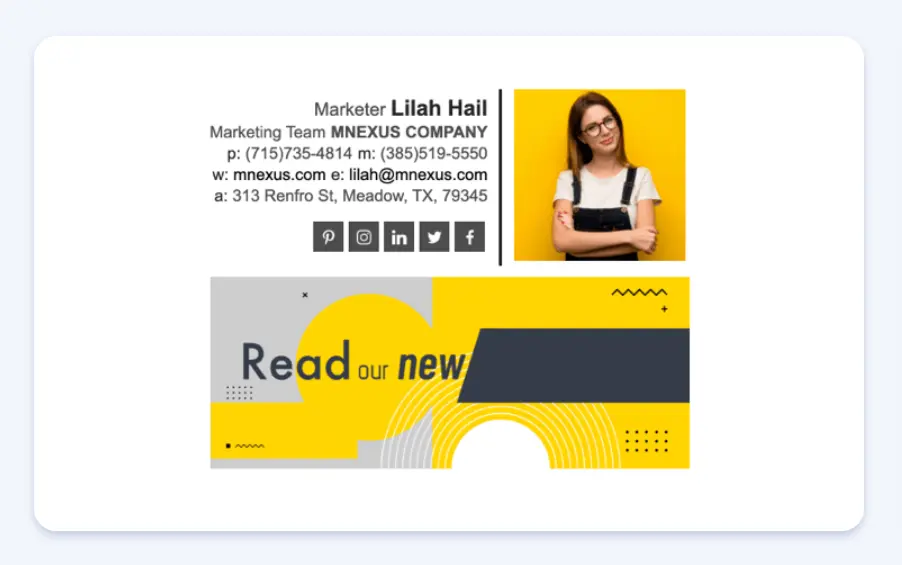
-
Links to your social media pages
Use the power of social media to attract new students, interact with current students, and stay in touch with alumni.
Key requirements for higher education email marketing campaigns
Here are a few more things to pay attention to:
-
Customization and personalization
Today's prospective students are not naive 17-year-olds anymore. They are experienced Internet users, and it takes a lot to stand out to them. In addition, their expectations have been heightened by progress in other sectors. Therefore, colleges and universities need to be able to deliver personalized content that specifically addresses recipients’ needs.
-
Mobile friendliness
Almost half of the email messages are opened on mobile devices. That is why it is important to provide recipients with the content that’s effortless to consume from a smartphone. Use bullet points, numbered lists, whitespace, and avoid providing too much detail.
-
Unsubscribe option
Not to upset recipients who sincerely don't want to receive your emails, be sure to include the “unsubscribe” option for users to unsubscribe from a list.
Key metrics to measure college email marketing
Always measure the success of your email marketing campaigns. This will allow you to see what does and what doesn’t work well. There is a variety of useful email marketing metrics, but we recommend to start with the basics:
-
Deliverability
This is the percentage of email messages that were delivered to recipients' inboxes compared to subscribers who didn't receive these messages.
-
Open rates
As the name implies, this is the percentage of subscribers who opened the email message you sent.
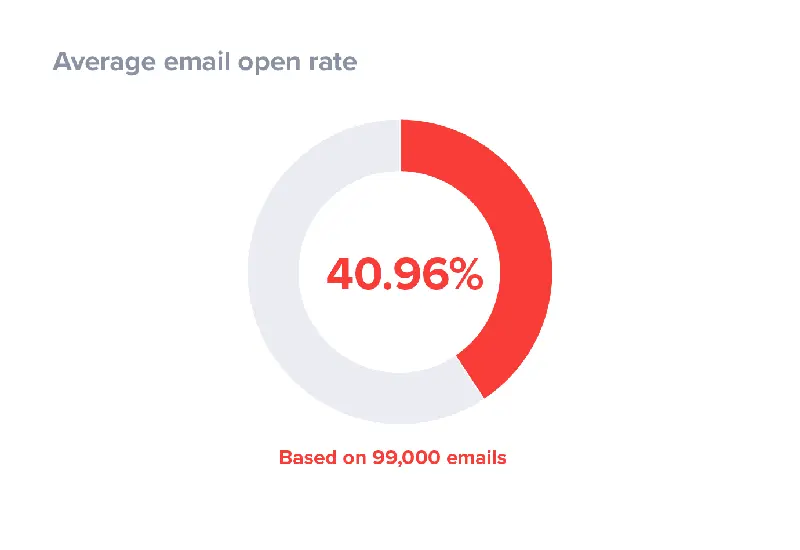
image source: SuperOffice
-
Unsubscribes
Unsubscribe rate is the % of people who unsubscribed after they received the email you sent.
-
Bounce rate
This is the percentage of email addresses that didn’t receive your email due to various reasons (invalid email address, email address doesn't exist, recipient's inbox is full, the server was down, etc.)
-
Spam rate
Spam complaint rate is about how many of your emails are marked as spam.
Mistakes you should avoid
We all make mistakes, but we can learn from them and become better. The same can be done for the enhancement of your university enrollment marketing. So, we have prepared a list of these five very common mistakes you should avoid.
-
Sending too many emails
More isn't always better. The same is true for sending emails. To prevent your emails from being sent to the spam folder, don't send out anything unless you are sure you have content your subscribers will find valuable. Also, avoid sending multiple messages that could have been combined into one.
-
Changing the “from” name
Try to keep your “from” name consistent for every email campaign. This should result in higher open and click-through rates.
-
Not having proper timing
Make sure your emails are delivered at the most fruitful time when the recipients are most likely to engage with them. To work out the best time to send emails, keep in mind the kind of occupation your recipients have. For college-age people, it would be mid-week around lunch time.
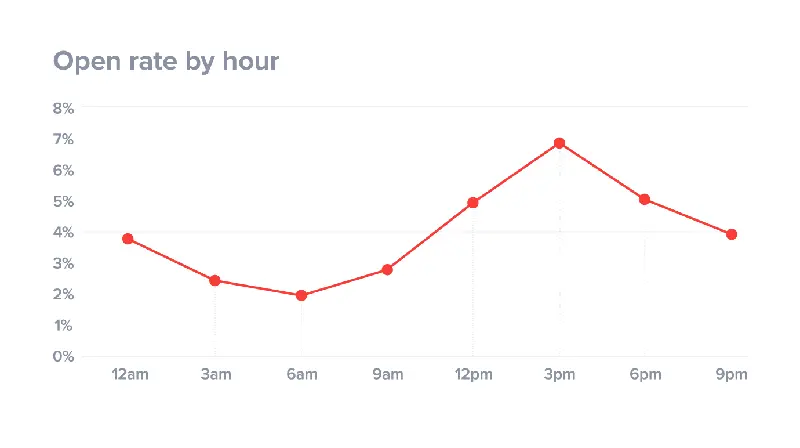
image source: SuperOffice
-
Inconsistent branding
Be honest: you wouldn’t trust much an institution with an unprofessional and inconsistent branding. What's more, prospective students may get your emails confused with other colleges and universities. So, make sure you have consistent branding across departments.
-
No A/B testing
Without a proper A/B testing approach, higher ed institutions are unable to determine the core factors that drive email campaign success and increase engagement.
Examples of higher education email marketing
And finally, we have collected some good educational email examples for inspiration.
#1 Walker College’s student recruitment email

What is so good about this email?
- It is personalized. The sender calls the recipient by the name (Nick);
- It has a logo at the top of the page, which makes the recipient learn fast who is the sender;
- The email contains a beautiful, warm image of the college building which creates positive associations;
- It has links to the college social media pages;
- They also provided an option to unsubscribe.
Things to improve:
- Make calls to action more pronounced (buttons, colors, and fonts);
- Add a professional email signature.
#2 Newsletter from TASIS
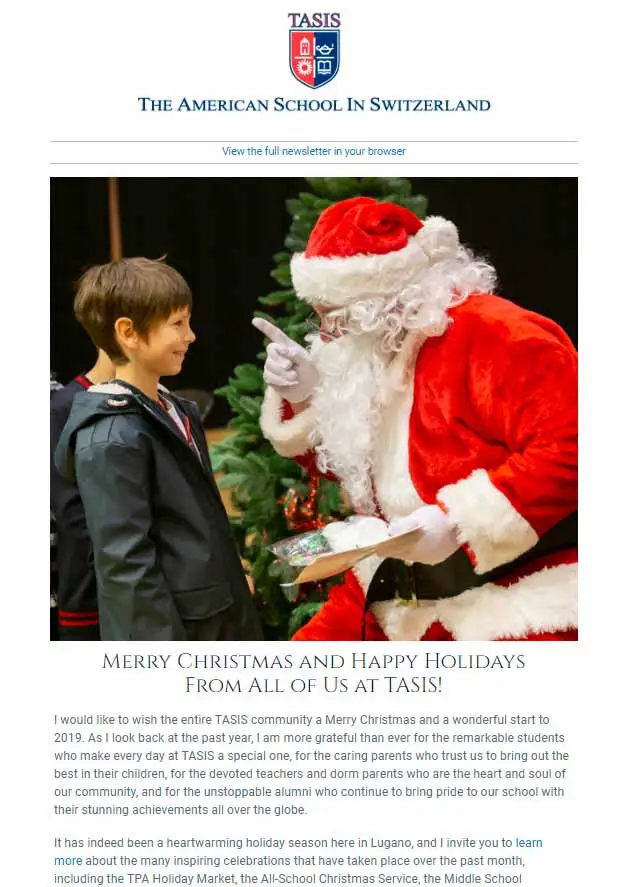

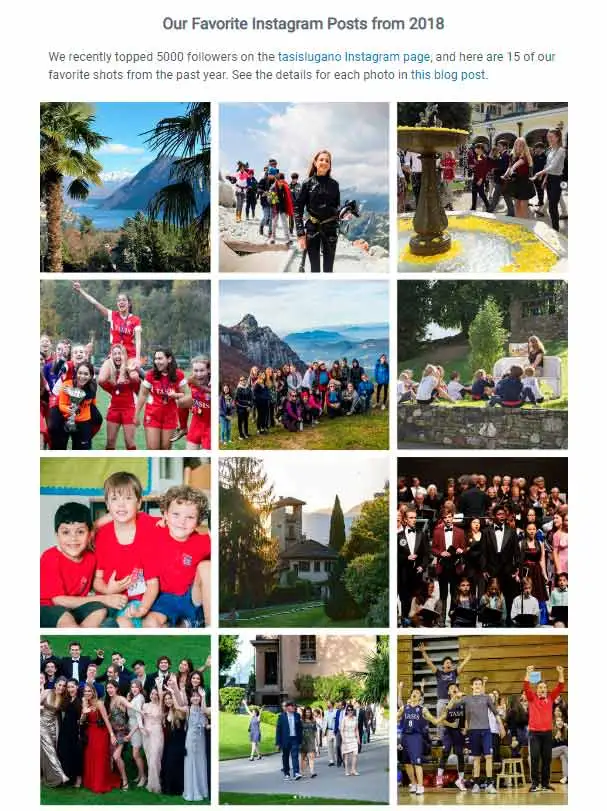
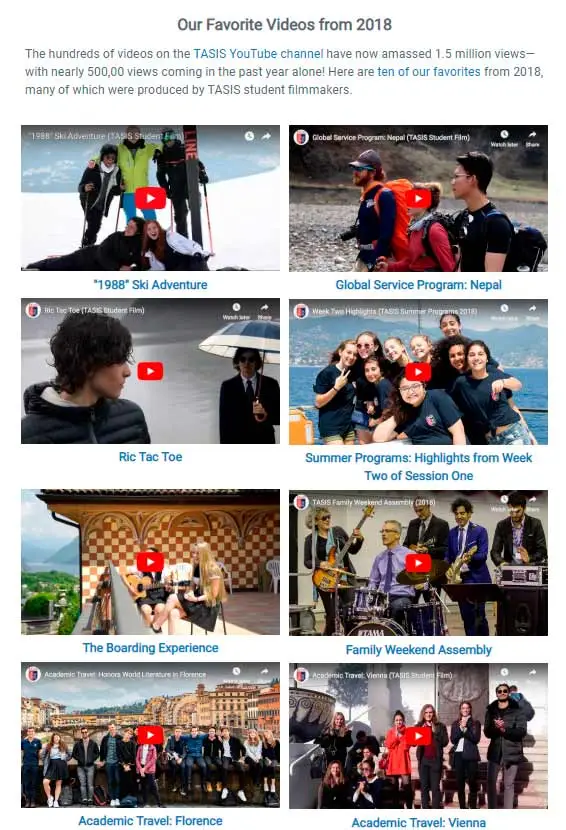
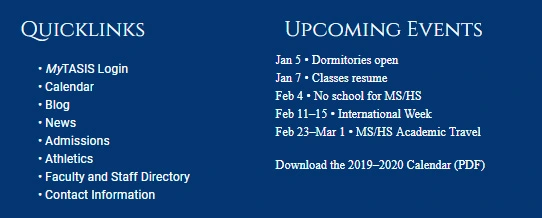
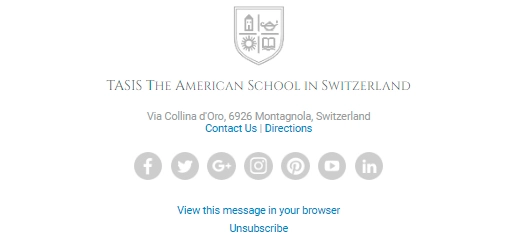
images source: TASIS
What is so good about this newsletter?
- It starts with a logo which represents the institution;
- The newsletter is full of quality visual images;
- It has CTAs to learn more, rather than filling the email with text;
- In this end-of-year newsletter, TASIS promotes its events, YouTube channel, and Instagram. And it looks very appropriate;
- The newsletter looks good on mobile;
- It has social media buttons;
- Recipients have an option to unsubscribe.
Things to improve:
- Make it more personal.

